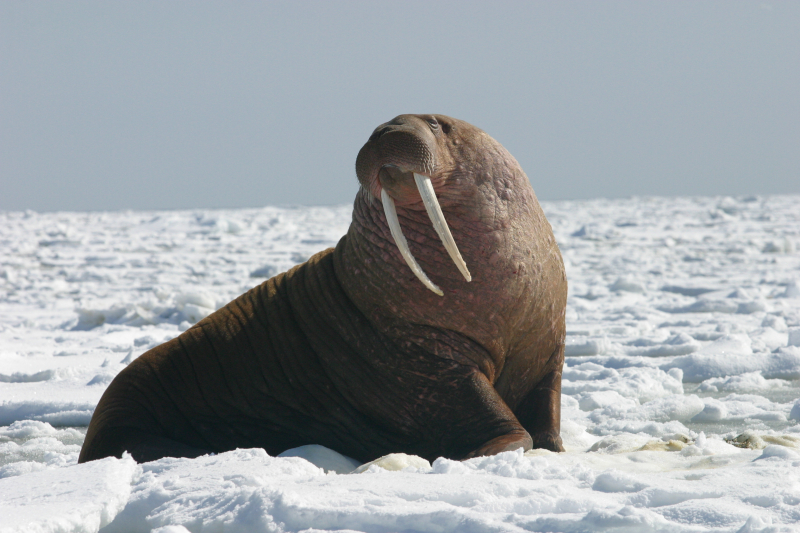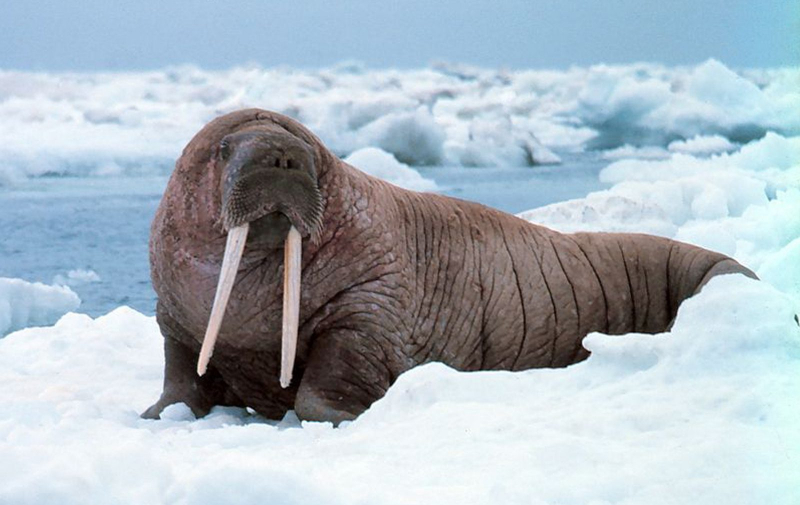Walrus
Near the Arctic Circle is where you can most frequently spot the long-tusked, mustachioed walrus lounging on the ice with countless others. Although these marine mammals are very social and frequently shout and snort at one another, they become hostile during the mating season. Walruses have wrinkly brown and pink hides and can be identified by their long, white tusks, grizzly whiskers, flat flippers, and blubber-filled bodies.
Walruses use their recognizable long tusks for a variety of purposes, many of which help them live a little bit easier in the Arctic. They utilize them to break breathing holes into the ice from below and to carry their gigantic bodies out of the icy waters, hence the nickname "tooth-walking".
The other distinguishing qualities of the walrus are similarly useful. The extraordinarily sensitive hairs on their faces, known as mystacial vibrissae, are used by walruses as detecting organs because their preferred foods, particularly shellfish, are found close to the dark ocean floor. Walruses are able to slow their heartbeats in order to tolerate the frigid temperatures of the surrounding waters, which is made possible by their blubbery bodies, which allow them to live happily in the Arctic region.












